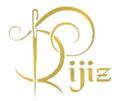What Type of Fabric Is Leather in Pakistan?
Have you ever purchased an item that was labeled "100% genuine leather" in Pakistan, but it turned out not to smell or last as real leather?
Every day, the problem people face is buying such items. The market is full of leather jackets, shoes, and accessories; they are being sold with a leather label, but few people know what leather actually is, how it is made, and why its quality varies so much across Pakistan. If you don’t know the difference, then you might find yourself buying a product at a high price that looks worn out, faded, or starts to peel in a couple of months. Which is really annoying, at a moment when leather is one of the most durable materials in the world.
But there is also a silver lining – leather in Pakistan is not only one of the country’s vibrant sectors, but is also one of the most beautiful things about the country. Pakistan is in the top league of global leather producers and exporters of raw hides, finished leather, and leather goods to foreign markets. From Sialkot’s sports industry to Karachi’s fashion exports, the material you see on jackets, shoes, handbags, and belts carries decades of expertise. But to make correct decisions, no matter if you are a buyer, a seller, or just someone who wants to know the worth, you have to figure out what type of fabric leather really is, how it is treated, and why leather from Pakistan is the best.
Leather as a fabric is a bit difficult to comprehend. It is made from the hides of animals like cows, buffalo, goats, and sheep. The whole process that makes the leather should already be from the slaughtering of the animals. After that, the raw hide is put through the tanning process to preserve it, make it stronger, and turn it into leather, which is both durable and flexible. In the case of leather, it is not the leather that is obtained from raising or knitting fibers, as with other materials. It is from the skin that the texture and feeling are different from others.
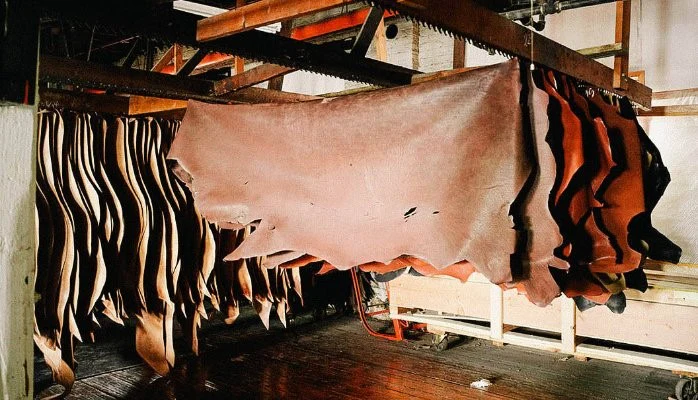
Why Leather Matters in Pakistan
Leather in Pakistan is not merely a fashion statement; it is the whole country’s primary economic resource. The leather industry is the major foreign currency earner for Pakistan. Tanning and dyeing centers in Karachi, Lahore, Kasur, and Sialkot are producing finished products for renowned companies of the whole world. The leather jackets, footballs, gloves, handbags, and shoes manufactured here etc. are the most common destinations in Europe, the Middle East, and the US.
However, there is also a local aspect to it. Consumers are often bewildered by the number of various qualities that are presented in the local market. Most “genuine leather” merchants may let off this phrase, but by no means does it imply the leather is of the highest quality. Without any knowledge of the layers of quality, the buyers seem to be deceived into paying for the lower-quality material at a higher price. This is the reason why you must know what kind of leather is fabric to make the right choices.
Types of Leather Commonly Found in Pakistan
1. Full-Grain Leather
This is the strongest and most long-lasting leather in Pakistan. It is the natural and untouched cowhide leather. A full-grain leather jacket, boots, and belts for your aged and stylish look are commonly made up of full-grain leather.
2. Top-Grain Leather
You could also say a little sanded or buffed to remove blemishes. Top-grain leather is less rugged and more flexible than full-grain. In Pakistan, Handbags and the cover of a car are made up of the top layer of the skin.
3. Split Leather
The product is the bottom of the leather hide called “split”. It is not strong and it is often treated to make it look like high-grade leather. For example, Suede is a split leather version.
4. Nubuck
What makes nubuck extremely soft and velvety to the touch is the fact that it is made by carefully sanding the outer layer of the hide. Most shoe brands in Pakistan use the material to produce their fashionable and luxurious products.
5. Bonded Leather
Bonded leather represents the lowest quality of leather, with the manufacturing process involving the gluing together of the leftover scraps of leather. The life-span is short, and the product will most likely peel or crack within a small period of time. Regrettably, it is usually advertised as “real leather” in the Pakistani local markets.
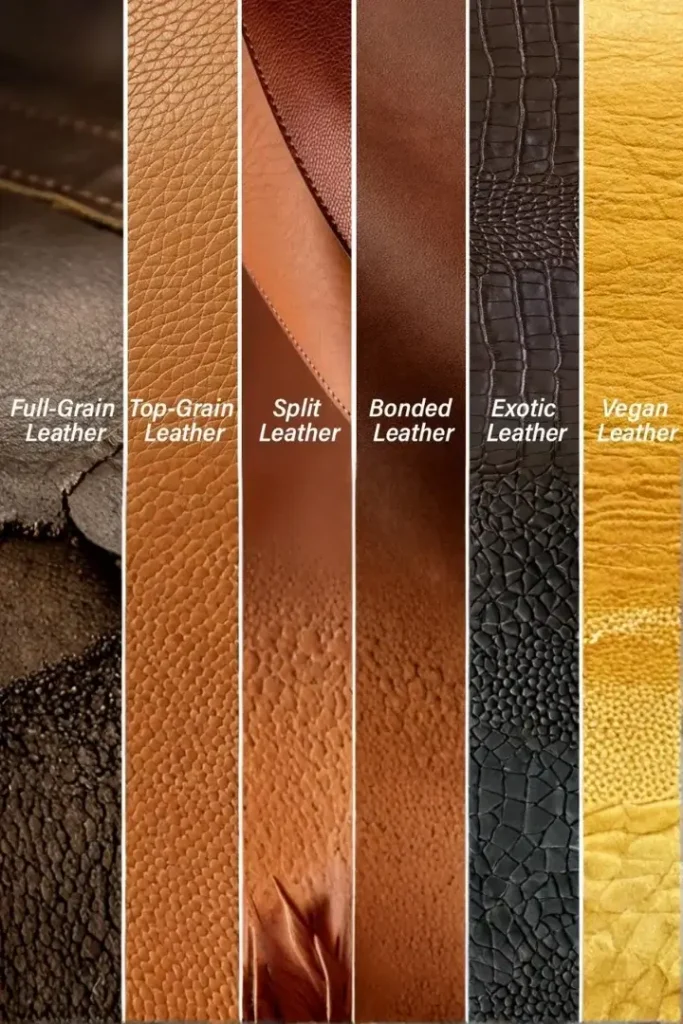
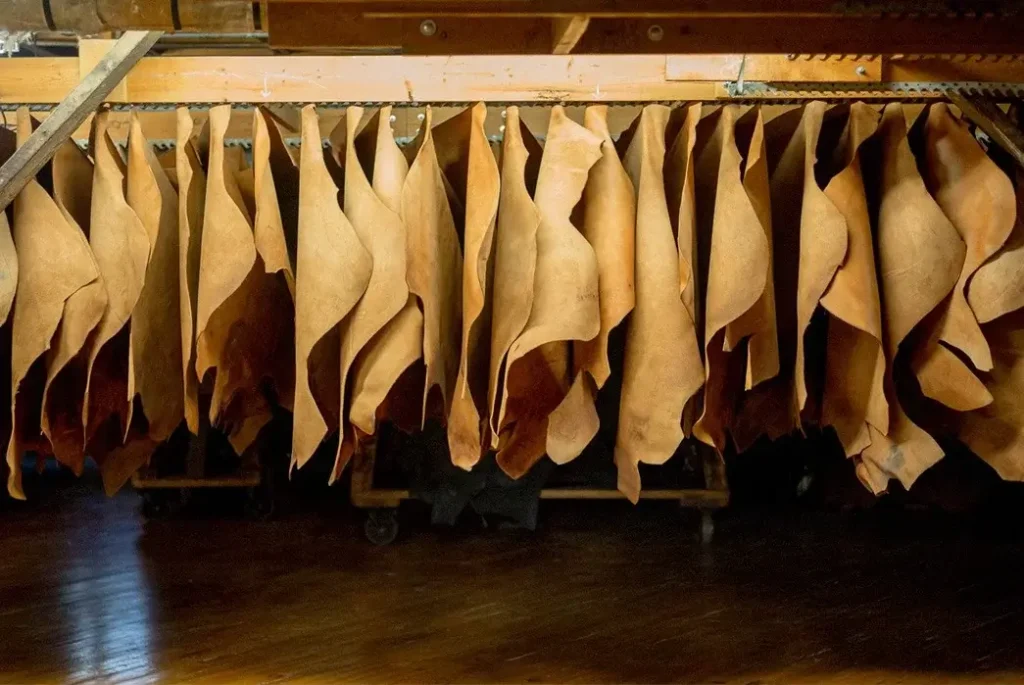
How is leather made in Pakistan?
The leather tanning in Pakistan is customarily done through the three main stages:
- Preparation: Besides cleaning, raw hides are also salted and treated to make sure they don’t decay.
- Tanning: This is the step where the hide is made strong and durable. Chrome tanning is mostly carried out in Pakistan because it is a quicker process; on the other hand, vegetable tanning is more traditional and eco-friendly.
- Finishing: Depending on the end usage of leather, it is dyed, polished, and finished accordingly, which can be for shoes, jackets, or furniture.
Strengths of Leather in Pakistan
- Durability: Treatment with proper tannery extends the leather’s lifespan up to several decades.
- Flexibility: Leather has flexibility, due to which it can be used in different areas ranging from fashion to Industrial equipment.
- Cultural Heritage: Tanning and leatherwork have been a part of Pakistan for centuries.
- Global Reputation: The quality and craftsmanship of Pakistani leather products have made their demand all over the world.
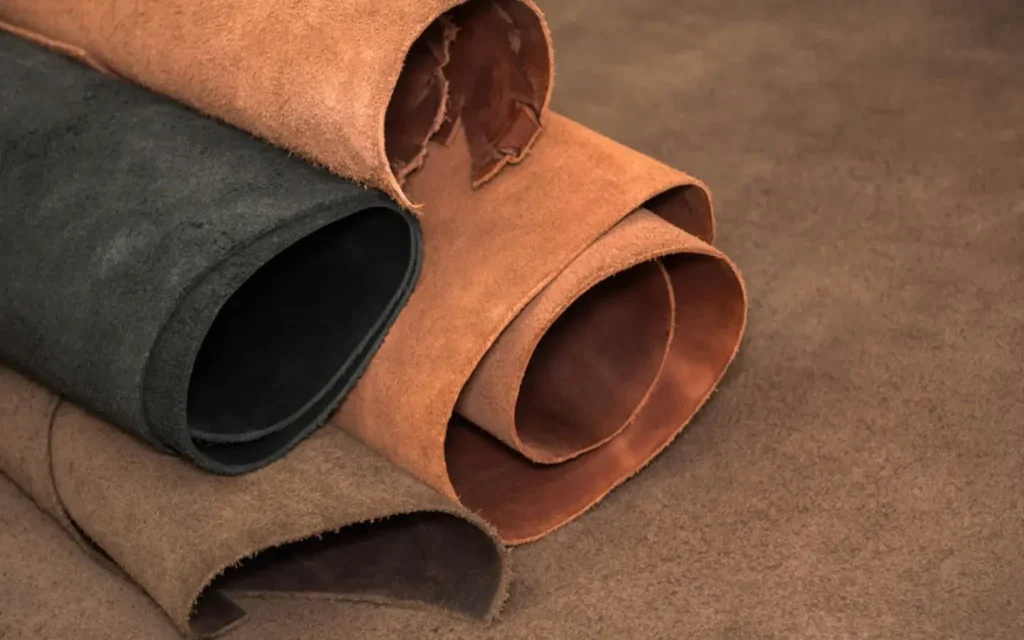
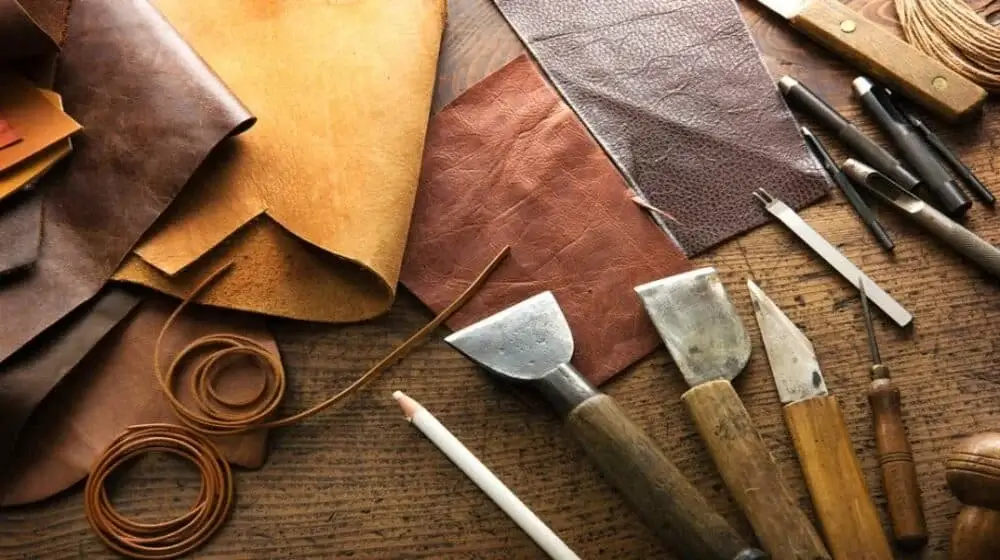
Challenges in Pakistan’s Leather Market
Leather in Pakistan is a brand that tells a story of strength, yet the makers of this brand still face challenges:
- Fake labeling: A considerable number of vendors sell and promote products that are made of a synthetic material but are labeled as genuine leather.
- Environmental impact: Waste management in Tanneries is a major issue that mostly results in pollution.
- Price gaps: There is a huge price difference between full and bonded leather, which are cheap, thus the buyers are confused to pick the right one.
This is the reason why it is very important to learn about different kinds of leather and their qualities before making any decisions.
How to Identify Real Leather in Pakistan?
If you are going to purchase a jacket, a bag, or a pair of shoes, here are some pointers that will assist you in identifying real leather from faux ones:
- Smell: The scent of real leather is earthy and natural, whereas the smell of fake leather is that of chemicals or plastic.
- Texture: Leather from animals is soft and yet firm to your hands. On the contrary, counterfeit leather is often just too smooth or rubbery in your hand.
- Water test: A small amount of water can be absorbed into genuine leather, while it will remain on the surface of artificial leather.
- Price: It is usually like that if the price is too good to be true, then it is just like that…. The cost of high-quality leather in Pakistan is higher because of the tanning and finishing process.
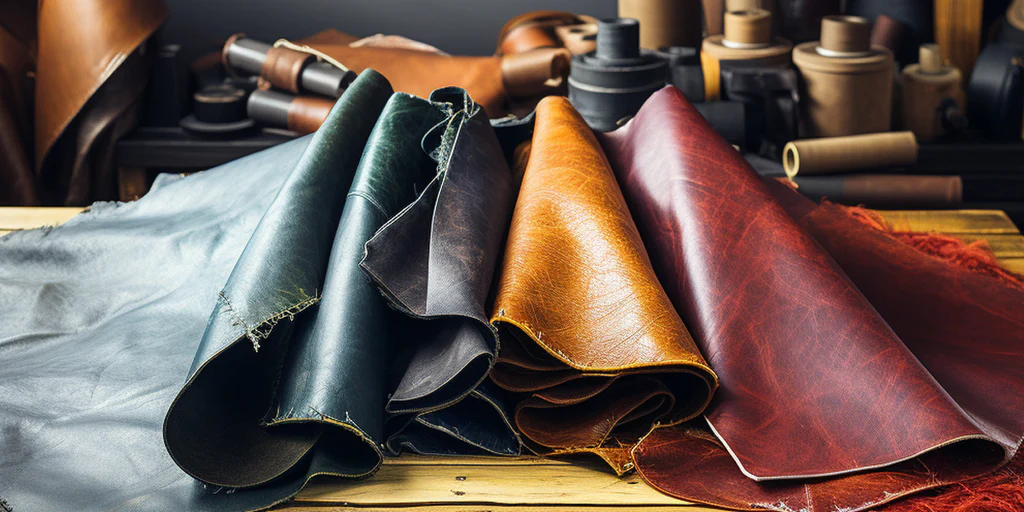
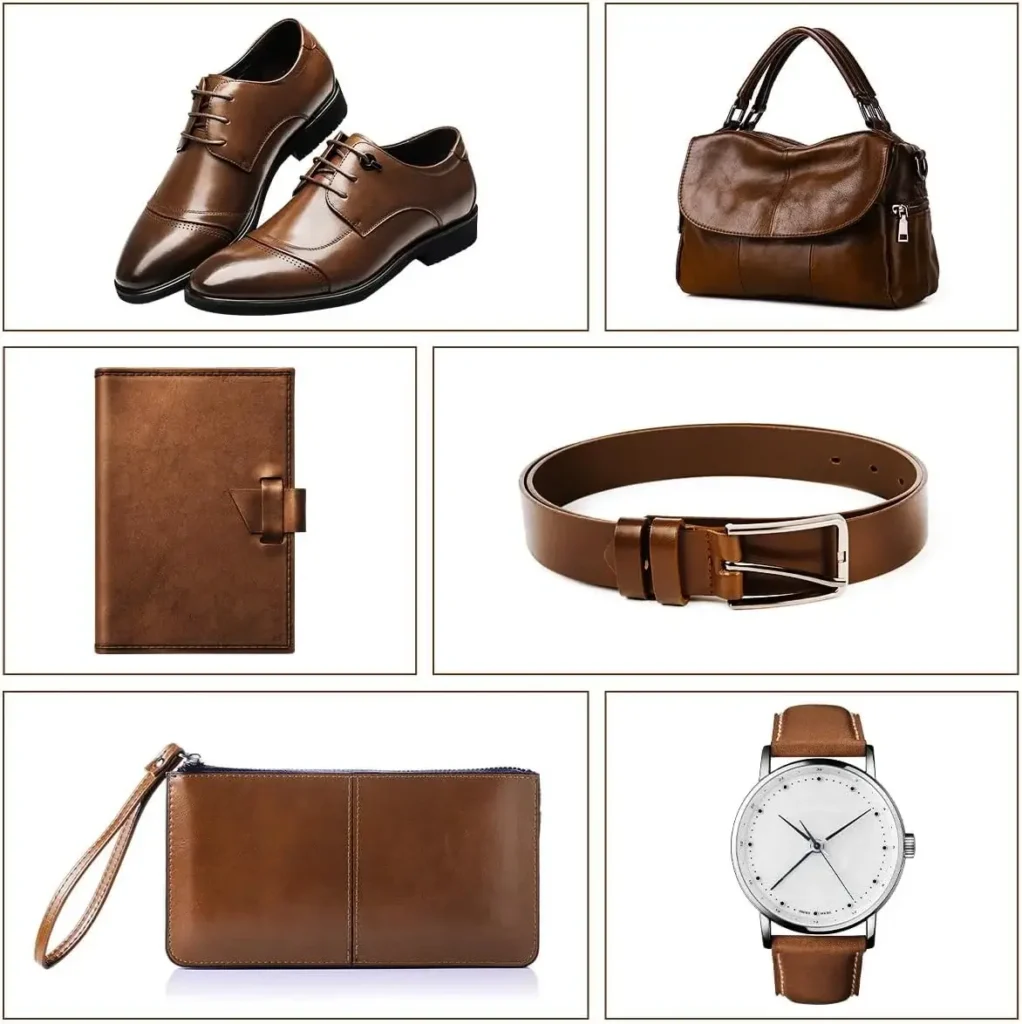
Everyday Uses of Leather in Pakistan
- Before you make an order, be sure of the brand’s size chart and your body measurements.
- Do not take a chance with “standard size” if you are buying bridal wear or formal suits; just opt for custom stitching.
- Measure yourself every 6–12 months and keep your measurements updated, as your body shape can change.
- If you are shopping online, it is recommended to buy from brands that provide their size charts in inches or centimeters.
Why Pakistani Leather Is Popular Worldwide?
The main reason why leather from Pakistan is chosen all over the world is the skills of the labor and the natural resources. Every year, hundreds of hides are produced in the country, and the handymen of cities like Sialkot and Karachi know the tricks to convert them into products of international standards. Buyers from different parts of the world mostly choose Pakistani leather because of its economical prices, which do not compromise the quality of the product.
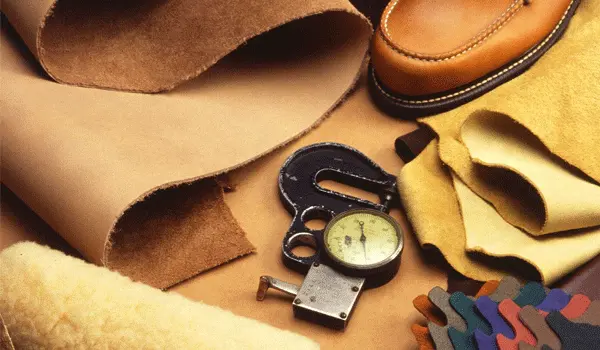
Final Thoughts
Pactiv-based leather is not only a more eco-friendly and biodegradable product but also the one embodying multifold benefits mainly concerning long-lasting properties and users’ satisfaction. The leather industry in Pakistan is excellent not only in raw materials but also in high-end fashion and accessory goods such as handbags and wallets. Besides its environmental advantages, excellent product quality, and distinguished by and large worldwide reputation, leather is the first choice of people in Pakistan, and the local industry has turned it into a potential world brand. It will not sound strange if leather industry becomes the leading export of Pakistan, the country which has received from the world numerous compliments of leather work.
The products of Pactiv Leather are made up of some parts that were previously considered waste, and, hence, they contribute to saving a lot of leather raw material. Eco-conscious consumers are always on the lookout for green products that are endorsed by the sustainability agenda. In their pockets would proudly display Pactiv products that follow this mission. On the other hand, in Pakistan, the manufacturers of the leather industry always work hard to ensure that the products are made available at prices that do not vary significantly from those in the biggest international stores. This is a perfect balance of the new high-tech leather, eco-consciousness, and local manufacturing.
FAQs
Leather is not a woven fabric, i.e., cotton, silk, or wool, but a natural material made of animal hides known as tanned leather.
The most common areas of production of leather are breeds such as cow and buffalo, from which leather for jackets, shoes, and sports goods, etc., are made worldwide.
Real full-grain leather (full-grain) and semi-aniline can last for over 50 years with excellent care. Revolving several factors based on these kinds of leather, bonded leather can last only a couple of years.
Labor and production are the two costs that are charged at a lower rate in Pakistan; hence, the products are more affordable but still of good quality.
The texture, smell, and durability test. The real leather keeps its natural look, has an earthy smell, and almost indistinctly takes in the water droplets.
The most common exported items are jackets, shoes, gloves, handbags, and sports gear.
It is not only one-directional; Pakistan is a net exporter of hides as well as leather goods, both in semi-finished and fully finished stages.
